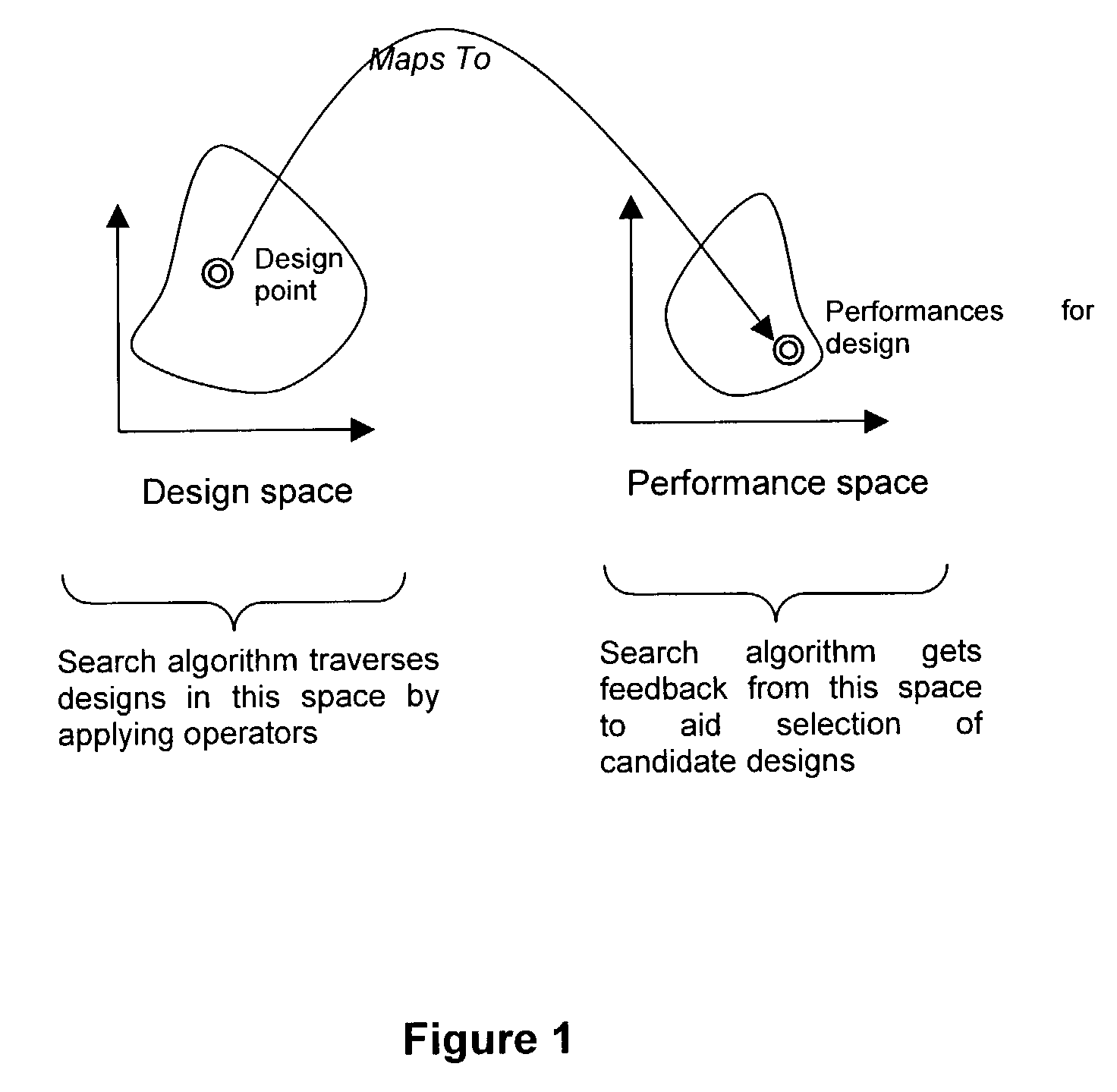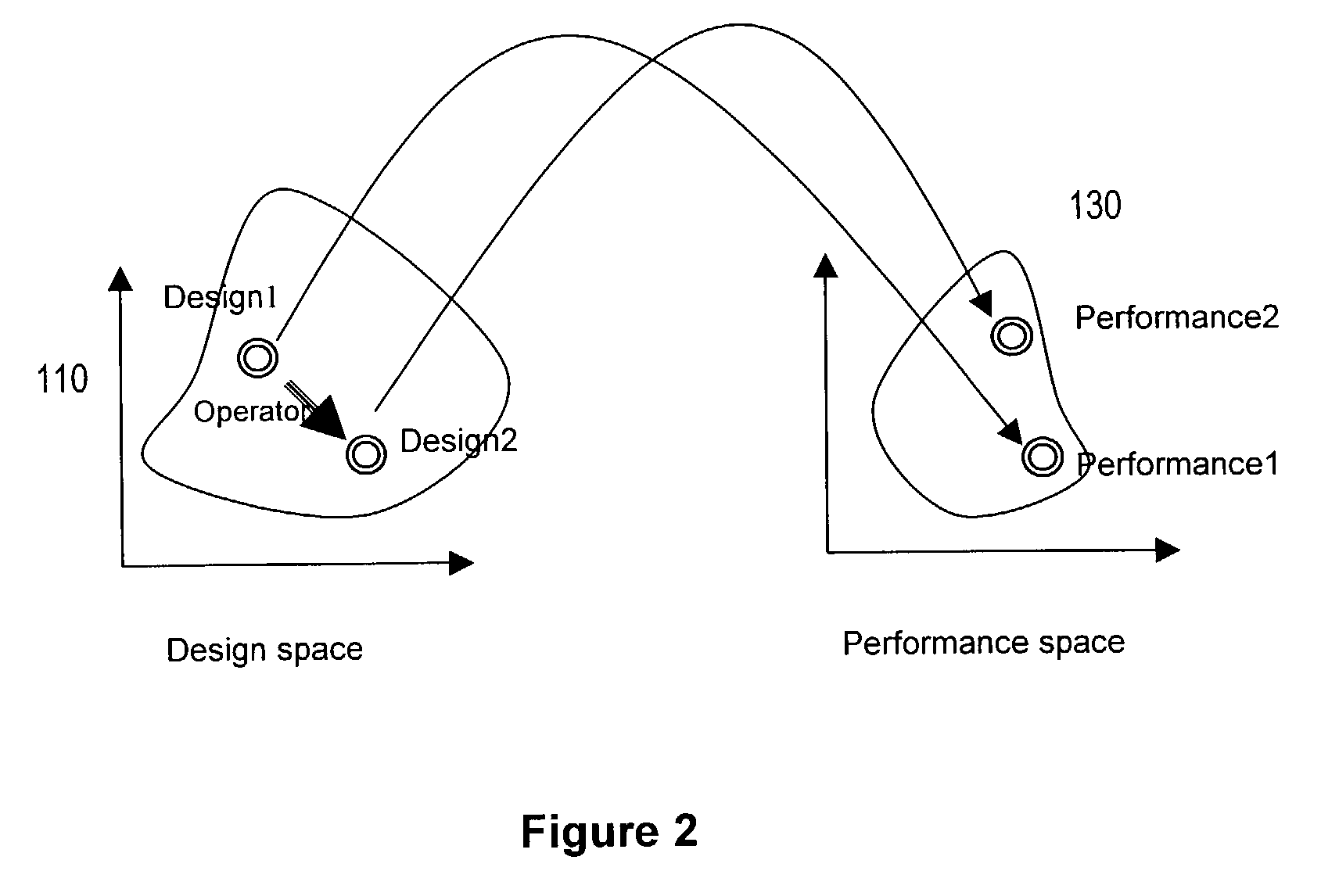Smooth operators in optimization of structures
- Summary
- Abstract
- Description
- Claims
- Application Information
AI Technical Summary
Benefits of technology
Problems solved by technology
Method used
Image
Examples
Embodiment Construction
[0029]Generally, the present invention relates to smooth structural operators, and their application in the technology design domain. By the expression technology design, we refer to the design of any technology having designable aspects including, for example, problems relating to scheduling, chemical processing, control systems, neural networks, regression modelling of unknown systems, molecular synthesis, optical circuits, photonics, communication networks and sensors.
[0030]In an optimization problem, there is a mapping from design space to performance space. The design space is the space of all possible designs. The performance space is the space of possible performances. See FIG. 1. For example, in the domain of neural network design: the design is the neural network, which includes neural network architecture of neurons and connections, weights on connections, and parameters in the neurons' activation functions; a performance measure with a corresponding design goal may be, fo...
PUM
 Login to View More
Login to View More Abstract
Description
Claims
Application Information
 Login to View More
Login to View More - R&D
- Intellectual Property
- Life Sciences
- Materials
- Tech Scout
- Unparalleled Data Quality
- Higher Quality Content
- 60% Fewer Hallucinations
Browse by: Latest US Patents, China's latest patents, Technical Efficacy Thesaurus, Application Domain, Technology Topic, Popular Technical Reports.
© 2025 PatSnap. All rights reserved.Legal|Privacy policy|Modern Slavery Act Transparency Statement|Sitemap|About US| Contact US: help@patsnap.com



